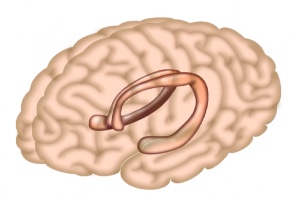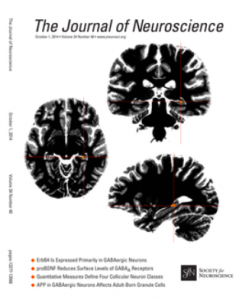Our latest paper entitled ‘Dissociated signals in human dentate gyrus and CA3 predict different facets of recognition memory‘ was published today in The Journal of Neuroscience! On top of that, our study is featured in the cover art!
See the cover art caption/blurb here.
Enormous thanks to Joe Watabe and Maria Ly, authors on the paper who contributed to this work invaluably.
Abstract:
A wealth of evidence has implicated the hippocampus and surrounding medial temporal lobe cortices in support of recognition memory. However, the roles of the various subfields of the hippocampus are poorly understood. In this study, we concurrently varied stimulus familiarization and repetition to engage different facets of recognition memory. Using high-resolution fMRI (1.5 mm isotropic), we observed distinct familiarity and repetition-related recognition signal profiles in the dentate gyrus (DG)/CA3 subfield in human subjects. The DG/CA3 demonstrated robust response suppression with repetition and familiarity-related facilitation. Both of these discrete responses were predictive of different aspects of behavioral performance. Consistent with previous work, we observed novelty responses in CA1 consistent with “match/mismatch detection,” as well as mixed recognition signaling distributed across medial temporal lobe cortices. Additional analyses indicated that the repetition and familiarity-related signals in the DG/CA3 were strikingly dissociated along the hippocampal longitudinal axis and that activity in the posterior hippocampus was strongly correlated with the retrosplenial cortex. These data provide novel insight into the roles of hippocampal subfields in support of recognition memory and further provide evidence of a functional heterogeneity in the human DG/CA3, particularly along the longitudinal axis.

